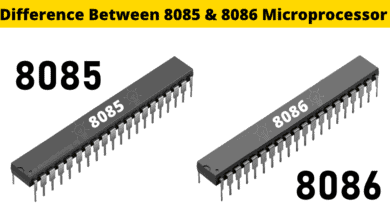Measuring Instruments
Electrical and Electronics Engineering Tools, Instruments, Devices, Components & Measurements
-

What Happens to the Battery with Reverse Polarity Wiring Connection
Charging & Discharging the Battery with Incorrect and Wrong Connection We know that a secondary battery (also known as an accumulator) is a device that converts the chemical energy into…
Read More » -

Why is Zero Ohm Resistor Used? 0-Ω Resistor Applications
Why is a Zero Ohm Resistor used instead of a Jumper Wire? What is Zero Ohm Resistor? A Zero Ohm Resistor (also known as Zero Ohm Link) is a passive…
Read More » -
How to Wire Combo Switch and Outlet? – Switch/Outlet Combo Wiring Diagrams
Switch and Outlet Combo Device Wiring Diagrams and Installation What is Combo Switch/Outlet Device and How to Wire It? A combo device is the combination of switch and outlet in…
Read More » -
Difference Between Circuit Breaker and GFCI
Main Difference between a Circuit Breaker and a GFCI The electricity just like a fire is a good servant but a bad master. You always need to keep it in…
Read More » -
Difference Between GFCI and AFCI
Differences between GFCI & AFCI – Ground Fault vs Arc Fault Circuit Interrupter Faults generated in electrical wires can cause serious injuries to any person & damages to the property if…
Read More » -
FACTS – Flexible AC Transmission System – Types of FACTS Controllers & Devices
Flexible Alternating Current Transmission System – FACTS Controllers & Devices What is FACTS and Related Devices? FACTS stands for Flexible Alternating Current Transmission System or simply Flexible AC Transmission System.…
Read More » -
What is Diode? Construction & Working of PN Junction Diode
Diode Construction, Working, Types, VI Characteristics, Advantages & Applications What is a Diode? “Di “= Two, and “Ode “= Electrodes i.e a device or component having two electrodes viz Anode…
Read More » -
Types of Computer Memory with their Applications
Different Types of Computer Memory and their Applications Just like a human brain, the digital devices such as computer, microcontroller and smartphone needs a space to store the information and…
Read More » -
Difference Between 8085 & 8086 Microprocessor – Comparison
Key Difference Between 8085 and 8086 Microprocessor The 8085 and 8086 are both different versions of microprocessors produced by Intel in the ’70s. They are the most common available microprocessors.…
Read More » -
Difference Between CPU and GPU – Comparison
Key Difference Between CPU and GPU The CPU (Central Processing Unit) & GPU (Graphics Processing Unit) have multiple common features such as they are both processors made from millions of…
Read More »







